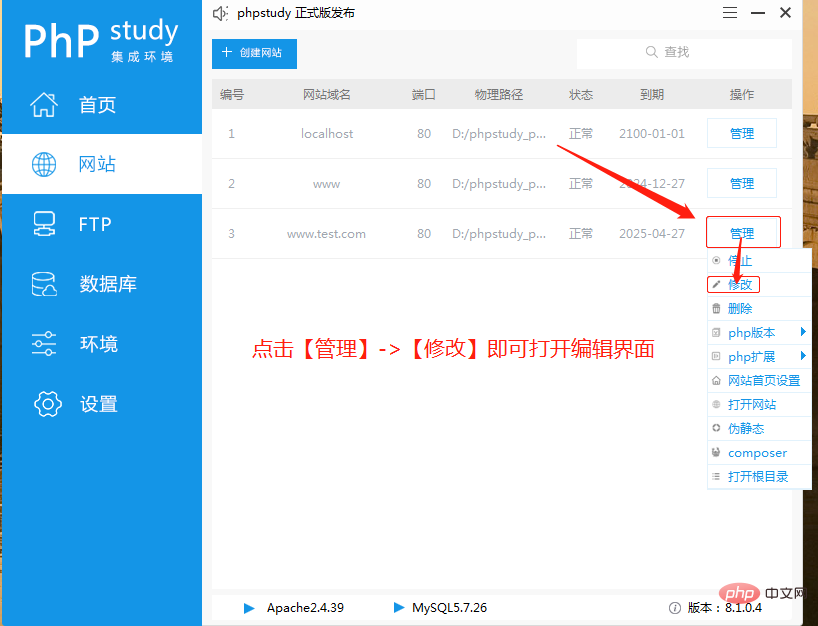Home >Operation and Maintenance >phpstudy >phpstudy v8 keeps 'showing that the port is occupied and is trying to close' solution
phpstudy v8 keeps 'showing that the port is occupied and is trying to close' solution
- GuanhuiOriginal
- 2020-05-13 16:08:265707browse
PHPStudy V8 starts the service by default on port 80, but when port 80 is occupied (generally, port 80 will be occupied by the Windows IIS service) PHPStudy will automatically kill the process occupying the port, and then start the service again. If it is killed If the dead process fails, it will always display "Display port is occupied and trying to close" as shown in the figure below.

So how to solve this problem?
This problem can be solved by modifying the default port number. Here is a step-by-step guide on how to solve this problem.
First start PHPStudy and click [Website] on the left column to enter the website management interface. You can see in the picture below that the port column is all port 80.

Then just click the [Modify] button under [Management] on the right to pop up the website editing interface.

Finally find the port column and change it to 8080.

Note: All website ports must be set to 8080, otherwise the service will still not be opened.
Finally, just start the service again. If it still shows that the port is occupied, please modify the port number again (the port number cannot be the same as the one that has been modified).
Related recommendations: "Solution to the problem that phpstudy port 80 is occupied by system under Win7 system"
The above is the detailed content of phpstudy v8 keeps 'showing that the port is occupied and is trying to close' solution. For more information, please follow other related articles on the PHP Chinese website!

